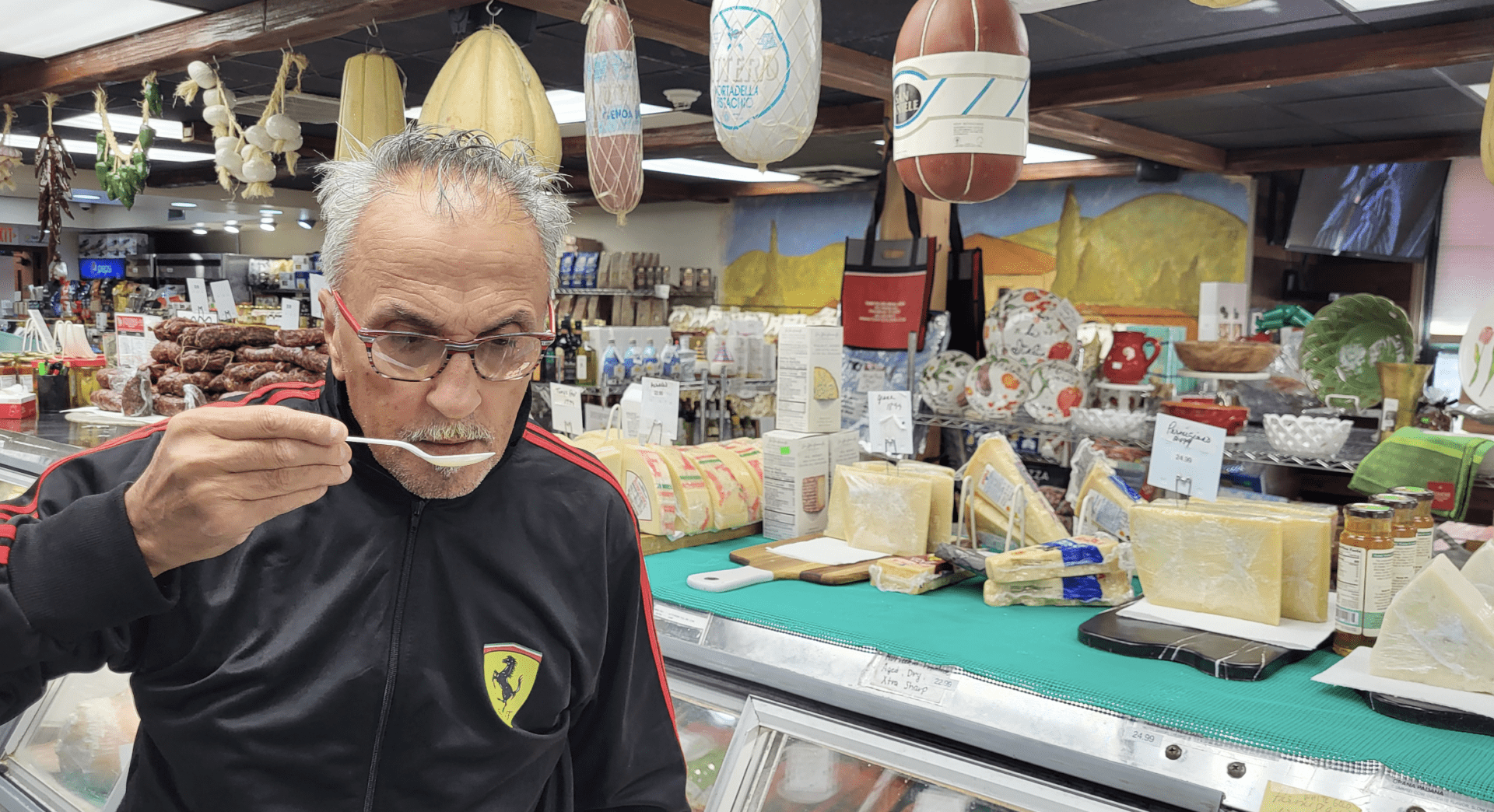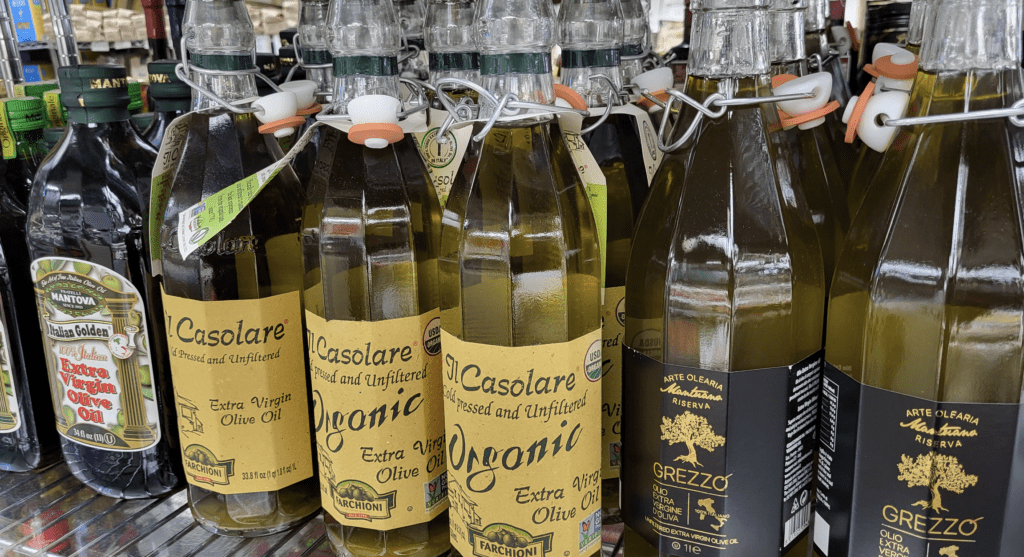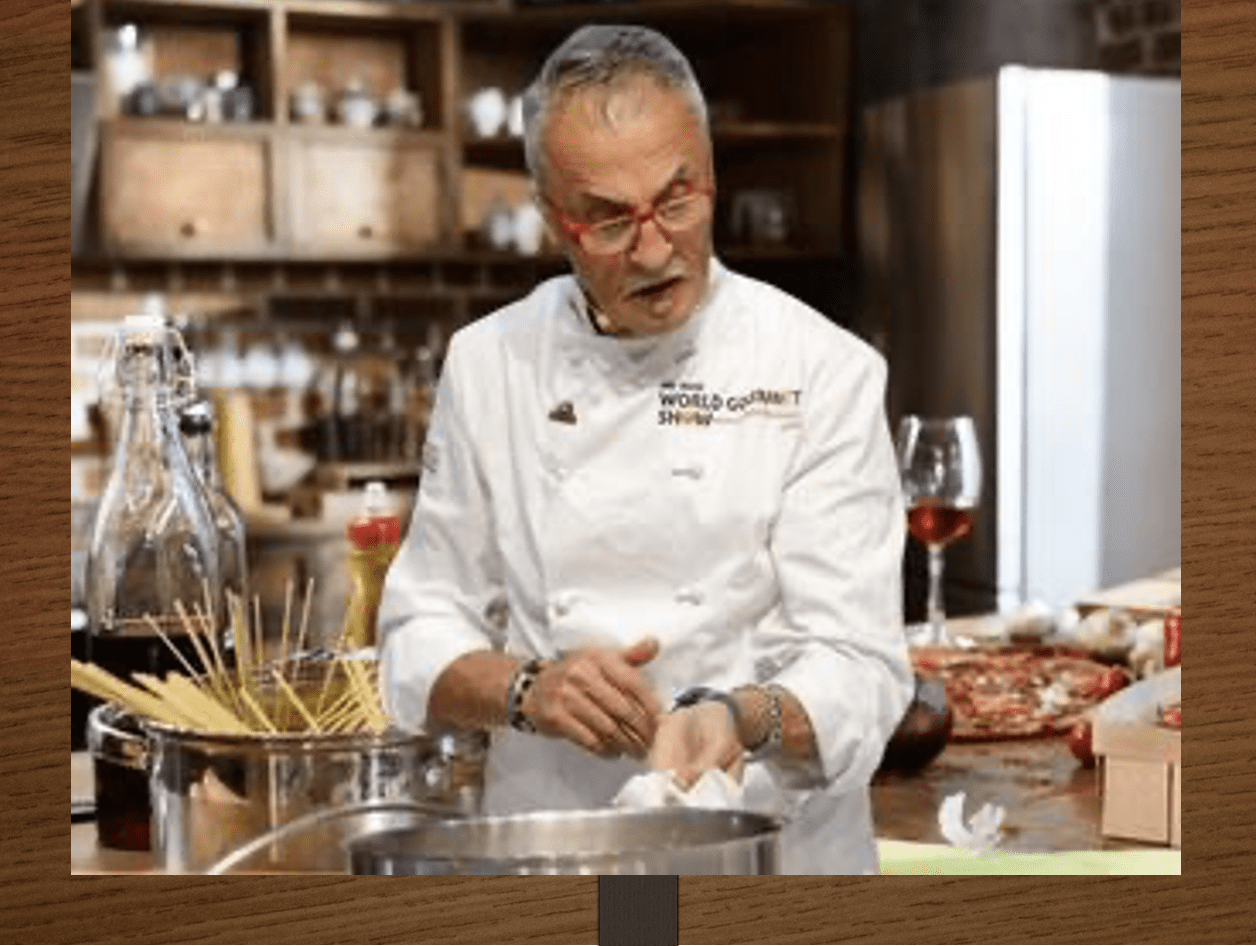Search Posts
Recent Posts
- New ALS treatment by PathMaker Neurosystems. Co. funded by RI Life Sciences Hub to come to RI. June 3, 2025
- ART! Cape Verdean Art at New Bedford Whaling Museum June 3, 2025
- Brown University Health names Samuel M. Mencoff Chair of the Board June 3, 2025
- Rhode Island Weather for June 3, 2025 – Jack Donnelly June 3, 2025
- Why 13-15 Rhode Island cities and towns oppose weapons ban legislation being voted on TODAY June 3, 2025
Categories
Subscribe!
Thanks for subscribing! Please check your email for further instructions.

Ask Chef Walter: Testing olive oil, a tutorial – Walter Potenza
by Chef Walter Potenza, contributing writer
Photos: Walter Potenza
Friends:
In this article, I would like to take you on a brief discovery and taste of olive oil. Many of you would like more answers; from selecting to tasting to purchasing, the olive oil dilemma continues to create confusion and uncertainty.

Olive oil is an essential pillar of Mediterranean cuisine, revered for its rich and diverse flavors and numerous health benefits. This versatile vegetable fat is a cornerstone in culinary practices, ranging from the simplicity of dressing a salad to the complexity of enriching elaborate gourmet dishes. However, the quality of olive oil can vary significantly, making it imperative for discerning chefs and food enthusiasts alike to develop the ability to identify superior olive oil through careful tasting.
- Tasting: A Multi-sensory Exploration
Tasting olive oil is a sophisticated art form that engages the full spectrum of human senses. This experience begins by pouring a modest amount of oil into a small, ideally dark glass, preventing visual bias based on color. Cover the glass with one hand, gently swirling it to slightly warm the oil, thus encouraging the release of its volatile aromatic compounds. This initial step is critical, as the aroma profile is a crucial indicator of the oil’s quality and characteristics.
- Visual Examination: Beyond Color
While the visual assessment of olive oil may seem straightforward, it requires a nuanced and trained understanding of what the color reveals and, more importantly, what it does not.
The color and the particular shade of olive oil can range from a vibrant green, often seen in oils freshly pressed from early-harvest olives rich in chlorophyll, to a more golden hue, indicative of a riper harvest. Despite these variations, color alone should not be used as a definitive quality measure, as it is influenced by factors such as olive variety, ripeness, and filtration process. Thus, while the appearance can offer clues, it is merely one component in the comprehensive evaluation of olive oil.
- Olfactory Assessment: The Role of Aroma
The olfactory examination is the most critical phase in evaluating olive oil, as the scent profile provides a direct insight into the oil’s freshness and quality. High-quality olive oil will present a symphony of fresh, vibrant aromas upon inhaling deeply from the glass. These may evoke notes of freshly cut grass, green apples, ripe tomatoes, or even hints of almonds. These fruity and vegetal notes indicate a well-crafted oil, typically rich in phenolic compounds that contribute to its health benefits.
Conversely, off-odors, such as mustiness or rancidity, suggest degradation or poor storage conditions, signaling an oil of inferior quality.
- Gustatory Experience: Complexity in Flavor
Tasting olive oil is an intricate experience beyond mere consumption; it is an analytical process that fully engages the palate, only for some palates if not trained. A small sip of the oil should be allowed to coat the tongue, enabling the taster to discern its various flavor components. A high-quality extra virgin olive oil will display a balanced interplay of bitterness and pungency—two hallmark traits of premium oils. Bitterness is associated with the polyphenol content, potent antioxidants that contribute to the oil’s health properties and distinctive taste. Pungency, a peppery sensation at the back of the throat, is another indicator of freshness and the presence of these beneficial compounds.
The ideal olive oil perfectly balances these elements, avoiding extremes that may overpower the palate.
- Aromatic Persistence: The Lingering Impression
A critical aspect of olive oil tasting is the persistence of its flavors after swallowing. This lingering effect, known as aromatic persistence, is a quality marker. A superior olive oil will leave a lasting impression, with flavors that evolve and resonate on the palate long after the initial taste. This extended sensory experience is a testament to the oil’s complexity and craftsmanship.
If the oil’s flavors dissipate quickly or leave an unpleasant aftertaste, it is likely not of premium quality.
- Product Consistency: Harmony in Characteristics
Consistency across sensory attributes—aroma, taste, and persistence—is the hallmark of a high-quality olive oil. A well-crafted oil will exhibit a cohesive profile where no single characteristic dominates to the detriment of others. The balance between bitterness, spice, and fruity notes should be seamless, contributing to a rich yet harmonious tasting experience.
- Guidelines for Purchasing: Informed Choices
When selecting olive oil, seeking out products with clear and detailed labeling is crucial. Look for information regarding the variety of olives used, the harvest date, and the geographical origin. The highest-quality olive oil is produced solely through mechanical methods without heat or chemicals, preserving its natural qualities. Understanding these details can guide you toward making informed purchasing decisions, ensuring you choose an oil that aligns with the highest quality standards.

Olive Oil benefits. Read Here
The final thought!
Recognizing top-quality olive oil requires practice and a discerning palate. Olive oil is no ordinary ingredient—it has the power to take a dish from ordinary to extraordinary. By mastering the art of tasting and understanding its unique characteristics, you can unleash olive oil’s full potential, making it the centerpiece of an unforgettable culinary experience.
Chef note:
Choosing Extra Virgin Olive Oil
While some extra virgin olive oils may be mislabeled, they’re still better than low-quality oils like “pure” or “lite.” To avoid mislabeling, it’s best to buy from a trusted source.
Check the Harvest Date
Always look for the harvest date and ensure it’s within the last year. Olive oils are typically harvested between October and December, so if shopping in April 2025, oil from Fall 2024 remains fresh.
Storage Conditions Matter
Heat and light damage olive oil. To preserve its quality, ensure your store keeps it in a cool, dark place. The Olive oil color does not indicate quality.
Trust Your Source
Since you can’t conduct a chemical analysis at home, buy from reliable producers or merchants. If you enjoy variety, look for a source that offers a range of high-quality oils and stores them appropriately. Do your research.


Images FK Attribution
www.chefwalterscookingschool.com
www.flavorsandknowledgetours.com

Meet Chef Walter!
There is a constant, recognizable thread in the career of Walter Potenza to elevate the level of Italian culinary culture in the United States. Besides his unquestionable culinary talent and winning business perspective, Chef Walter has been a relentless educator with passion and knowledge who defeats stereotypes. His life, career, and values are a model, an example to follow by any chef of Italian gastronomy working outside Italy.
Chef Walter appears regularly on National and International Networks such as Food Network, ABC, CBS, NBC, RAI, FOX, and Publications such as NY. Times, Washington Post, Wall Street Journal, Food & Wine, Saveur, Gourmet, and several Italian media outlets. And now – RINewsToday!

excellent tutorial on olive oil